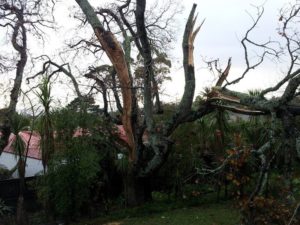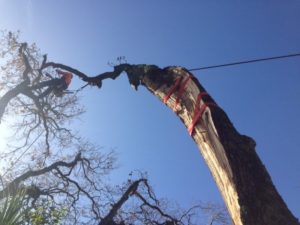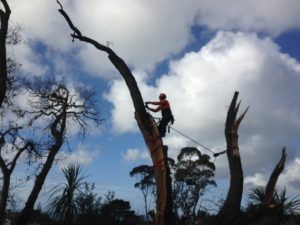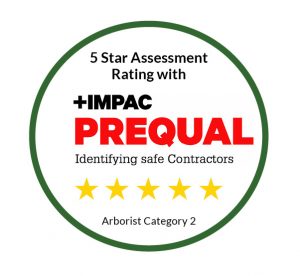Storms can strike at any time, which puts any tree at risk of damage – and the assets surrounding it, too. The job of an arborist is to provide quick and efficient emergency tree trimming.
Whether you’ve got an exotic tree that doesn’t look safe or trees near homes and roads are making you nervous, Pro Climb can assist. Our very own emergency tree removal service experts can visit your property and advise on the best course of action.
What Trees are at Risk of Requiring Emergency Tree Work in Auckland?
Any tree in the wrong environment can be at risk of needing to be removed. In saying that, our arborists have enough experience with emergency tree work in Auckland to know which trees are more at risk.
Exotic trees, for example, enjoy a warm, sunny climate and high rainfall in Auckland. As a result, they can grow far quicker here than their home environment. Given their fast growth, they are weaker and more prone to failure.
Our Emergency tree service teams utilise the latest methods and equipment on all jobs.
This means our work is carried out safely and efficiently, allowing us to meet even the tightest of deadlines without compromising on quality.
Pro Climb prides itself on its zero impact policy: we care for your trees, your property and the landscape.
With our qualified and highly experienced staff, there’s no situation we can’t handle.
Tree removals and tree pruning working above delicate gardens and valuable property assets are carried out using modern arboricultural rigging techniques. These techniques allow us to preform safe and efficient tree pruning and removals in the most confined space.
How to Know You Require an Emergency Tree Removal Service
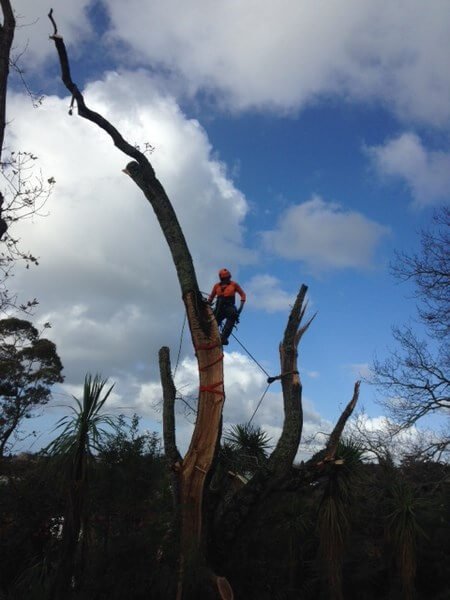
Many people don’t know they require emergency tree felling until it’s too late. The tree has fallen or broken, and something has been damaged. However, there are several ways to know if emergency tree work could be on the cards, or if you require an arborist’s assistance to prevent further health and safety risks.
- Over-extended branches
- Structural weaknesses
- Cavities
- Sharp angles
- Restricted root zones
- Cut roots
- Poor stem taper
- Decay
Have questions?
Get the answers from Emergency Tree Services management experts
It’s not always easy to know if the tree problem you’re facing is an ‘emergency’ or not. You can always call us on 09 300 1422 to find out, but storm damage, over-extended branches, cavities, weaknesses, sharp angles, cut roots, poor stem taper, decay, and restricted root zones are among the many problems that could require emergency tree services.
Call the team at Pro Climb, of course! Phone 09 300 1422 for help and advice when you need it the most, or email info@proclimb.co.nz.
The emergency tree services you may require can depend on the issue. Complete tree removal may be the best and only option, or we may be able to preserve the tree and simply cut off dangerous branches.
